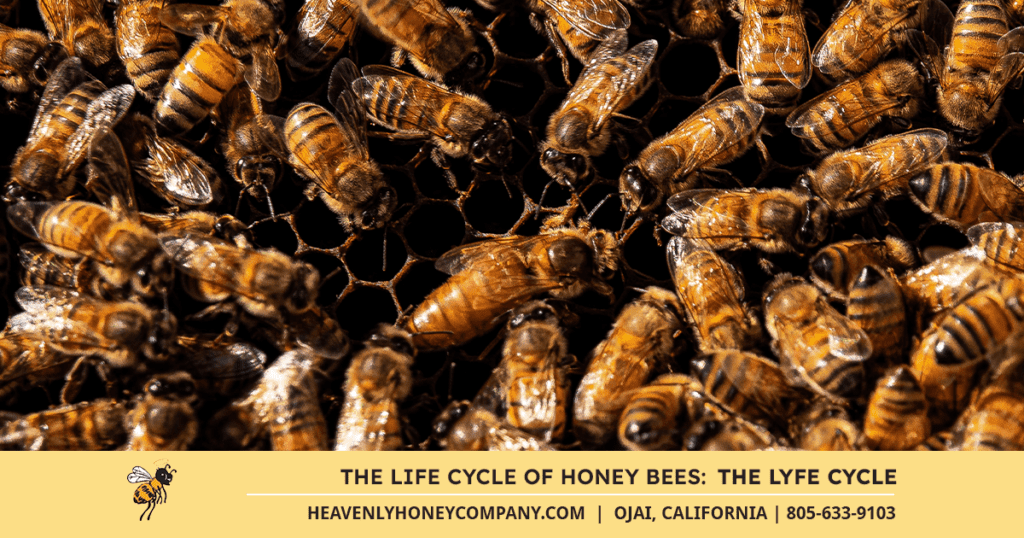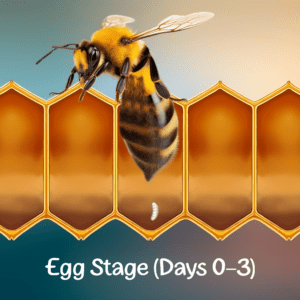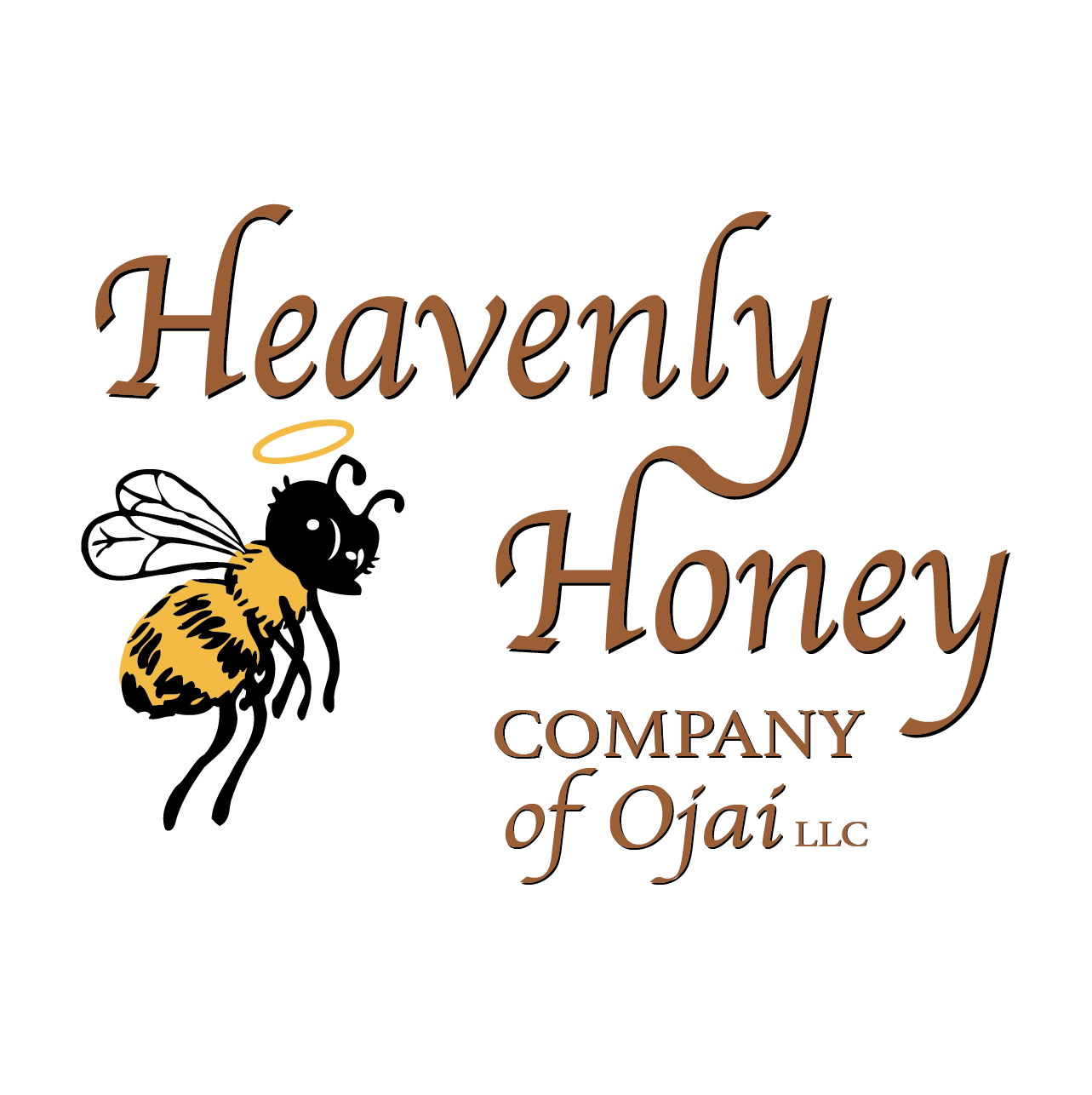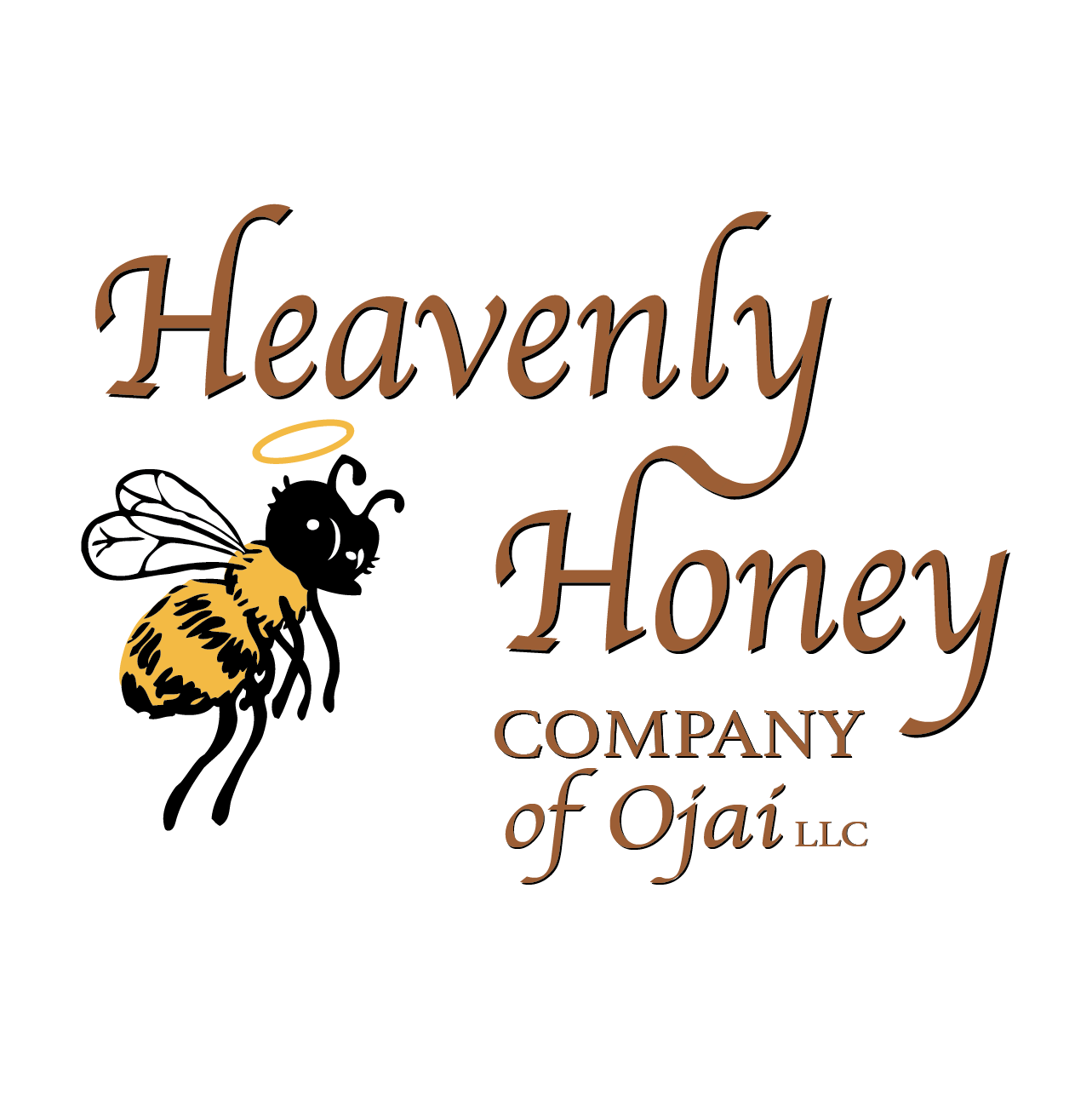
Honey bees (Apis mellifera) are some of nature’s most hardworking and fascinating creatures.
Understanding their life cycle gives us a window into how a hive operates. It shows us exactly how each bee contributes to the colony’s success.
At Heavenly Honey Company, we value bees not just for their honey, but for the pollination that feeds our world. In this guide, we’ll walk you through the incredible journey from a tiny egg to a flying adult.
Understanding the Life Cycle of a Honey Bee
The life cycle of a honey bee is a continuous process. While every bee goes through the same four stages, the time they spend in each stage depends on their role: Queen, Worker, or Drone.
The Three Castes
Before diving into the stages, it is helpful to know who is in the hive:
- The Queen: The mother of the colony.
- Worker Bees: The females who do the work (and the ones you see flying outside).
- Drones: The males, whose only job is mating.
Fertilized vs. Unfertilized Eggs
It all begins with the Queen. She lays two types of eggs:
- Fertilized Eggs: These become female bees (Workers or Queens).
- Unfertilized Eggs: These become male bees (Drones).
This biological trick allows the Queen to control the population balance of her hive perfectly.
Savor the Sweetness: Your New Favorite Treat Awaits
Cinnamon Apple Spice Tea: Cozy Comfort in Every Sip
Indulge in the warm embrace of our Cinnamon Apple Spice Tea. Crafted with aromatic spices and hints of crisp apple, this blend evokes the cozy essence of autumn in every sip. Whether enjoyed hot by the fire or iced on a sunny day, this tea offers a flavorful escape perfect for any moment of relaxation.
Raw Orange Blossom Honey: A Golden Taste of California Sunshine
Experience a taste of California sunshine with our Raw Orange Blossom Honey. Sourced from vibrant orange groves, this honey captures the delicate floral notes of orange blossoms, creating a sweet, golden treat. Drizzle it over yogurt, stir it into tea, or enjoy it straight from the jar—each spoonful promises natural goodness and a burst of floral flavor.
A Perfect Pairing
Discover the ultimate pairing with our Cinnamon Apple Spice Tea and Raw Orange Blossom Honey. This duo creates the perfect balance—warming tea with notes of cinnamon and spice, complemented by the floral sweetness of raw honey. Enjoy this match made in heaven as a morning boost or a soothing nightcap, and let the natural goodness elevate your tea ritual.
Explore our Honey Products | Delight in our Organic Teas | Get Refreshed with our Soaps
Now let’s jump into The Stages of the Honey Bee Life Cycle!
The 4 Stages of Development

Egg Stage (Days 0–3)

The life of a bee starts in a hexagonal wax cell. The Queen lays a single egg, which looks like a tiny grain of rice, at the bottom of the cell.
- Worker eggs go into standard-sized cells.
- Drone eggs go into slightly larger cells.
- Queen eggs are placed in special, large “Queen cups.”
These cells are engineering marvels. Bees build them using beeswax produced from glands on their abdomens. The hexagon shape is chosen for pure efficiency—it provides the most space while using the least amount of wax.
After about three days, the egg hatches.
Larva Stage (Days 3–9)

Once the egg hatches, a white, worm-like larva emerges. This is the “eating phase.”
For the first three days, all larvae are fed Royal Jelly, a super-nutrient produced by nurse bees.
- Future Queens: Continue to eat only Royal Jelly (this diet is what turns them into queens!).
- Workers & Drones: Switch to “Bee Bread” (a mixture of pollen and honey) after day three.
During this time, the larvae grow rapidly. They molt (shed their skin) several times. After about six days of eating, they are ready to transform.
Pupa Stage (Days 9–21)

When the larva reaches full size, worker bees seal the cell with a wax cap. Inside, the larva spins a cocoon.
This is where the magic happens. Similar to a butterfly in a chrysalis, the bee develops legs, wings, eyes, and body hair.
Metamorphosis Timeline:
- Queens: Pupate quickly (approx. 7 days).
- Workers: Take about 12 days.
- Drones: Take about 15 days.
Adult Stage (Day 21+)

Finally, the fully formed adult chews through the wax cap and emerges.
The bee is now ready to take on its role.
- Workers: Immediately start cleaning and working.
- Drones: Prepare to find a mate.
- Queens: Prepare to take over or start a new colony.
Roles and Responsibilities
The Queen Bee
She is the heart of the hive. As the largest bee, she is the only female capable of reproduction.
- Job: Laying up to 2,000 eggs per day.
- Lifespan: 2 to 5 years.
- Fact: The oldest recorded queen lived for seven years!
Worker Bees
These are the engine of the colony. They are all sterile females.
- Job: Cleaning, feeding larvae, building wax, guarding the hive, and foraging for food.
- Lifespan: About 6 weeks in summer; 4–5 months in winter.
- Impact: Without workers, the colony would collapse instantly.
Drone Bees
These are the male bees. They have large eyes and no stinger.
- Job: To mate with a Queen from another hive.
- Lifespan: A few weeks to a few months.
- Fact: They do not forage or help inside the hive. If they don’t mate by winter, the workers will kick them out to save food.
Development Timelines at a Glance
For beekeepers, knowing the math is essential. Here is how long it takes for each bee to grow from egg to adult:
| Caste | Egg | Larva | Pupa | Total Time |
|---|---|---|---|---|
| Queen | 3 Days | 5.5 Days | 7.5 Days | 16 Days |
| Worker | 3 Days | 6 Days | 12 Days | 21 Days |
| Drone | 3 Days | 6.5 Days | 14.5 Days | 24 Days |
The End of the Cycle
The end of a bee’s life is as varied as its beginning.
- Worker Bees: They literally work themselves to death. In summer, they fly so many miles that their wings eventually tatter and fail.
- Drones: If they successfully mate, they die immediately after the process. If they don’t mate, they are evicted in autumn to die of exposure.
- Queens: When a Queen gets too old or enters the wrong hive, she may be “balled.” This is when workers swarm around her, vibrating their wings to overheat and eliminate her.
How Biology Impacts Honey Production
Worker bees are the reason we have honey. From the moment they emerge, they are working to store energy.
They convert nectar into honey and store it in the honeycomb. This honey isn’t just for us—it is the colony’s winter fuel.
A healthy lifecycle means a strong population. A strong population means a surplus of honey. This allows us at Heavenly Honey Company to harvest the excess while leaving plenty for the bees to thrive.
The Life Cycle of Honey Bees Conclusion
The life cycle of honey bees is a remarkable process that keeps the hive functioning smoothly. From the hard-working worker bees to the reproductive roles of the queen and drones, each bee plays an essential part in the colony’s survival.
Understanding the stages of the honey bee life cycle can deepen our appreciation for these incredible creatures.
At Heavenly Honey Company, we’re committed to sustainable beekeeping practices. We support healthy bee populations to ensure the important role bees play in our ecosystem—with the added bonus of continued production of delicious honey.
FAQs About The Life Cycle of Honey Bees
What is the life cycle of a honey bee?
The life cycle of a honey bee includes four stages: egg, larva, pupa, and adult. The entire process takes between 16 and 24 days, depending on the caste (type of bee).
How long do honey bees live?
The lifespan depends on the bee’s role:
Worker bees: Live about 6 weeks in summer.
Queen bees: Can live several years.
Drone bees: Live until they mate or are expelled before winter.
What happens during the pupa stage of a honey bee?
During the pupa stage, the honey bee undergoes metamorphosis. This is when the worm-like larva develops wings, legs, and adult features inside the capped cell.
What is Royal Jelly?
Royal Jelly is a nutrient-rich substance produced by nurse bees. It is used to feed all larvae for the first few days. However, Queen bee larvae are fed Royal Jelly exclusively throughout their development, allowing them to grow larger and develop reproductive abilities.
How long do queen honey bees live for?
Queen honey bees typically live 2 to 5 years, much longer than worker bees. Their lifespan depends on their ability to lay eggs and the overall health of the colony.





